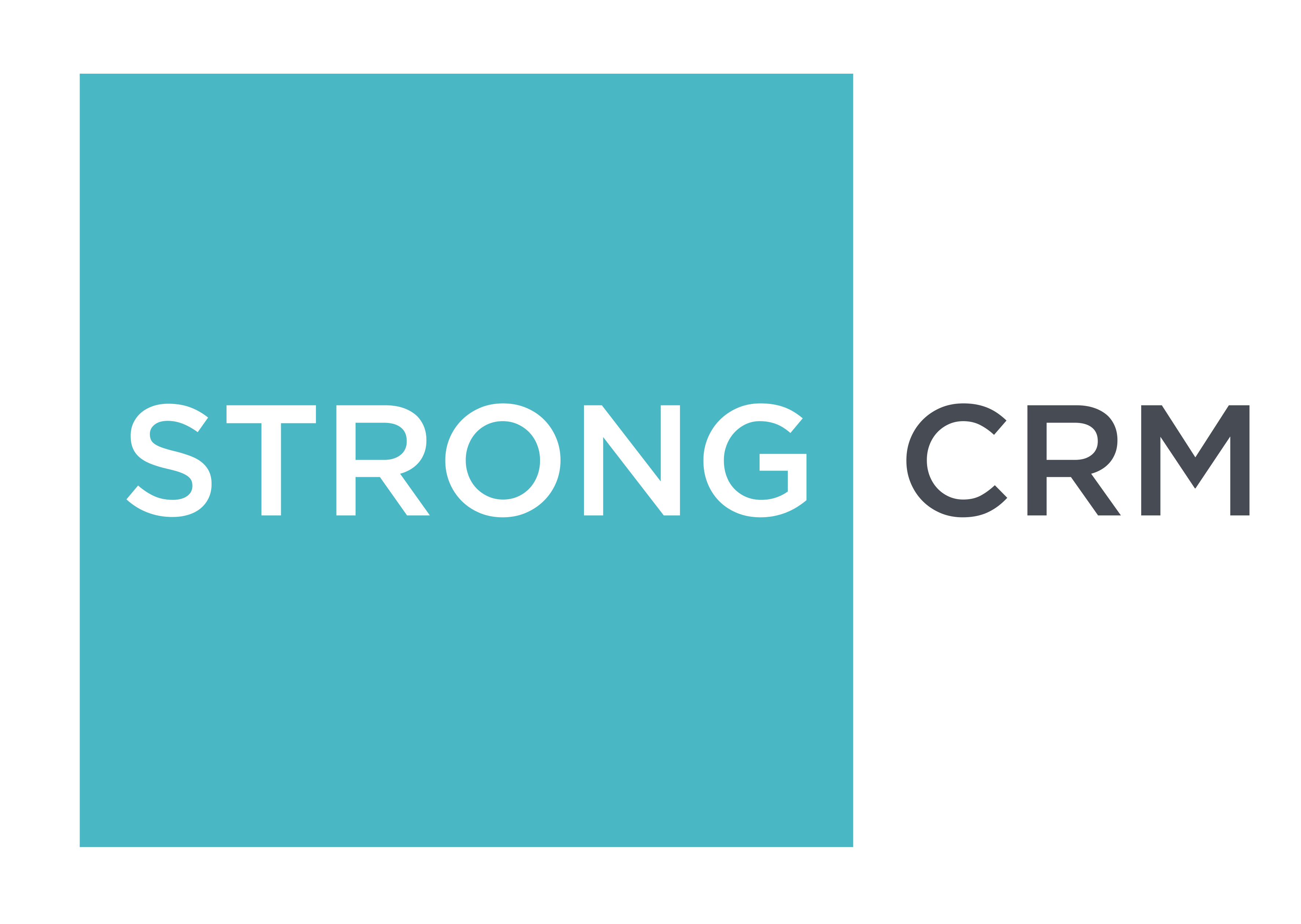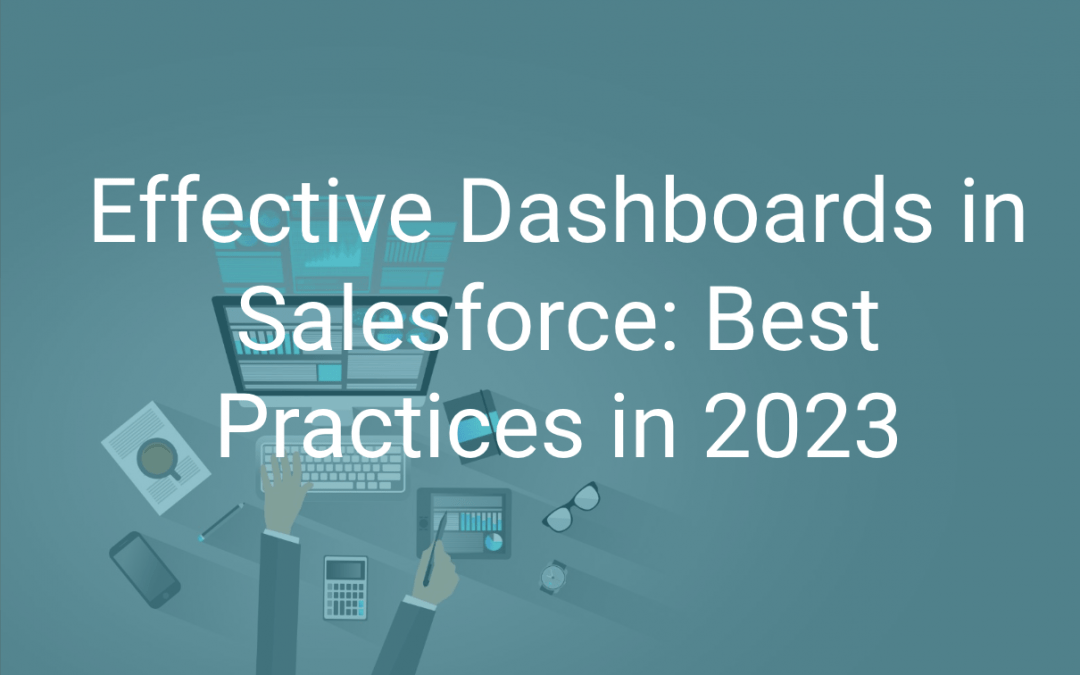Building effective dashboards in Salesforce is no longer an optional skill for revenue leaders.
Data is the lifeblood of sales and marketing, and being able to effectively communicate revenue, engagement, and sales metrics to reps and executives is essential to your team’s success. By using Salesforce’s built-in Dashboards, you can turn cluttered and complex reports into easily reviewable data that streamlines performance analysis and meetings for your entire team.
For those just beginning on their Salesforce journey, Salesforce Ben has a great guide on Creating Dashboards in Salesforce which may be a good place to start if you are unfamiliar with how to create dashboards.
In this blog, we will dive into some of the best practices for making sure your Salesforce Dashboards are as effective as possible to increase your teams’ performance across all your revenue-generating activities.
Data Clarity and Simplicity
The primary purpose of creating dashboards is to make data more easily consumable, and having clear and simple data is the key to making a good dashboard.
Before you create your dashboard, it’s important to decide what data to include. While some data might be important to your business as a whole, it may not be relevant to a particular dashboard and can end up causing clutter.
This is a core principle of building effective dashboards, and the practice of simplifying your data visualization is applicable to the rest of the best practices included in this blog.
Identify Key Performance Indicators (KPI)
Identifying your KPIs is an important first step to deciding which information to include in your dashboards. As we mentioned previously, including irrelevant information is a detriment to your dashboard, so making sure you know which metrics to display for each team is key.
Defining your KPIs also prevents you from missing important information that may otherwise go unnoticed. While dashboards are great for viewing data and informing your teams, team members may begin to rely solely on a source of information that is missing key info for their success. Understanding which data matters for which team is a must before beginning to build a dashboard.
Visual Hierarchy
Mastering Visual Hierarchy is an easy way to make effective dashboards in Salesforce. Visual Hierarchy is the concept of using shape, size, and color to organize information in a way that makes the most sense for our minds.
For example, making good use of colors is an easy starting point. Make sure that the colors in your visuals make sense and are not easily mistakable, e.g.: green = good, red = bad, avoid using 4 different shades of blue.
Sizing visuals on a dashboard is a good way to rank importance. Larger panels should be reserved for information that will be reviewed frequently and that is a primary focus of the dashboard. You can use smaller dashboards to show some additional information that may be useful but perhaps not as frequently monitored or discussed.
The main benefit of visualizing data is making it more easily consumable, and without using proper Visual Hierarchy, that benefit can be lost entirely.
Customization for User Roles
Using Salesforce dashboards allows you to create different customizations for different people on your team.
For example, say you want sales reps to be able to see metrics about their opportunities but not be able to see other reps’ opportunities, but you also want sales executives to be able to see information about all existing opportunities. Instead of having to build out multiple dashboards, you can instead tailor access for different users, making it so that all of your teams see only information that is relevant and appropriate for them.
This is only one of many potential uses for User Role customization. Utilizing this feature is a great way to keep sensitive data secure and make sure dashboards remain effective and clear to each individual user.
Feedback Loops
As your business grows and changes, your data does too. Creating proper feedback loops to adapt and improve your dashboard is crucial to staying up-to-date on your team’s needs and setting them up for success
If your team hasn’t utilized a dashboard component for an entire quarter, it could be beneficial to remove or replace that metric with something else. Changes like these may seem trivial, but a dashboard’s entire purpose is saving your team time and effort, so even minimal changes should be considered and applied frequently.
Setting up a consistent cadence for feedback and review of your dashboards is a good way to make sure you are up to date with your team’s needs.
Conclusion
Creating effective dashboards in Salesforce requires an understanding of your team’s needs. Visualizing data is a simple and powerful way to keep everyone on track towards your shared goals, so make sure to take advantage of this incredible Salesforce feature.
That’s where Strong CRM can help. From leveling up your reports and dashboards knowledge, to innovative and effective Salesforce customization, Strong CRM’s managed services help businesses unlock the most out of Salesforce. If you want to learn more about the difference between staff augmentation and managed services, visit DesignRush.
If you’d like to learn more about how Strong CRM can help you customize and automate your Salesforce instance to make creating and sharing dashboards easier, reach out to us or check out our other blogs.

